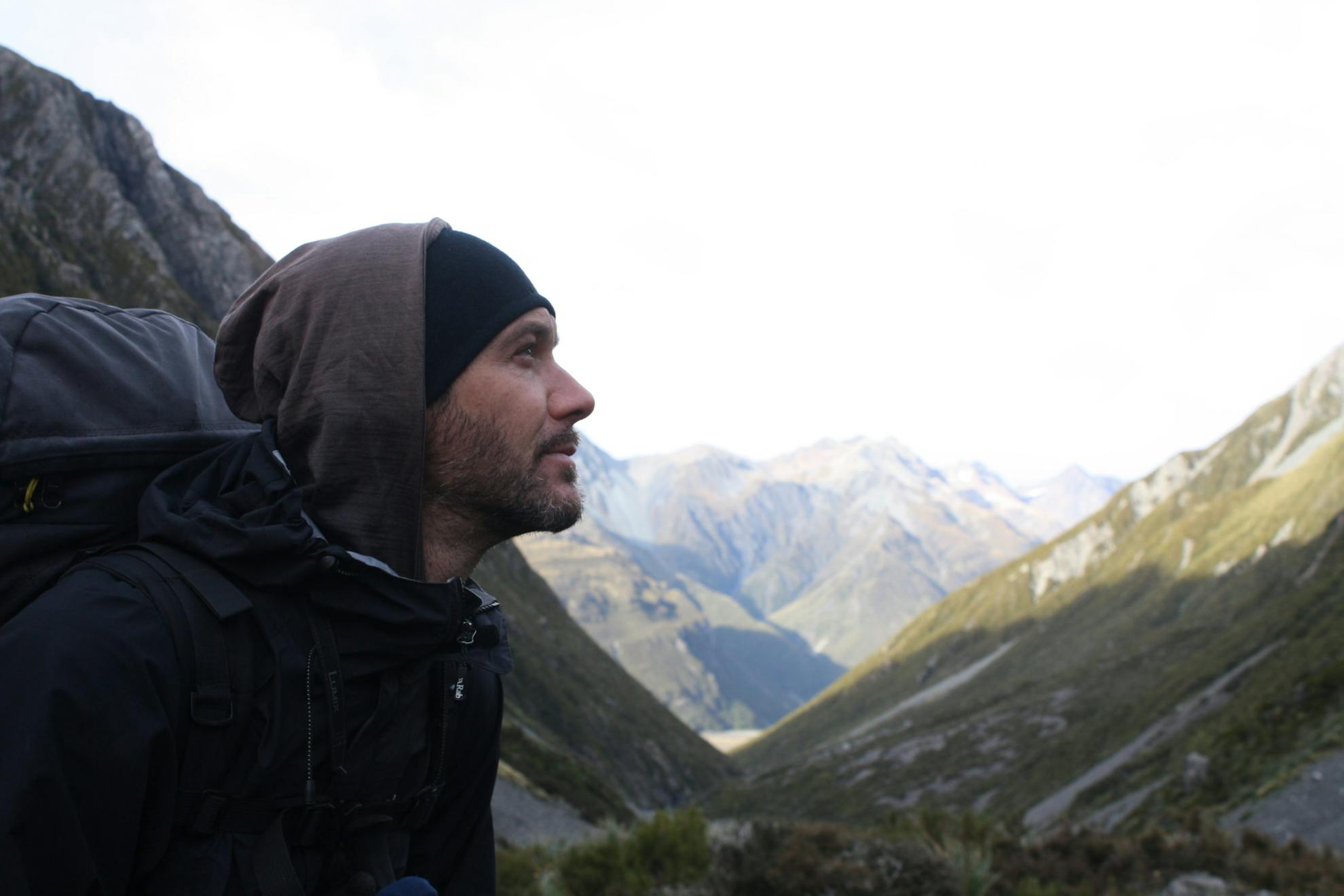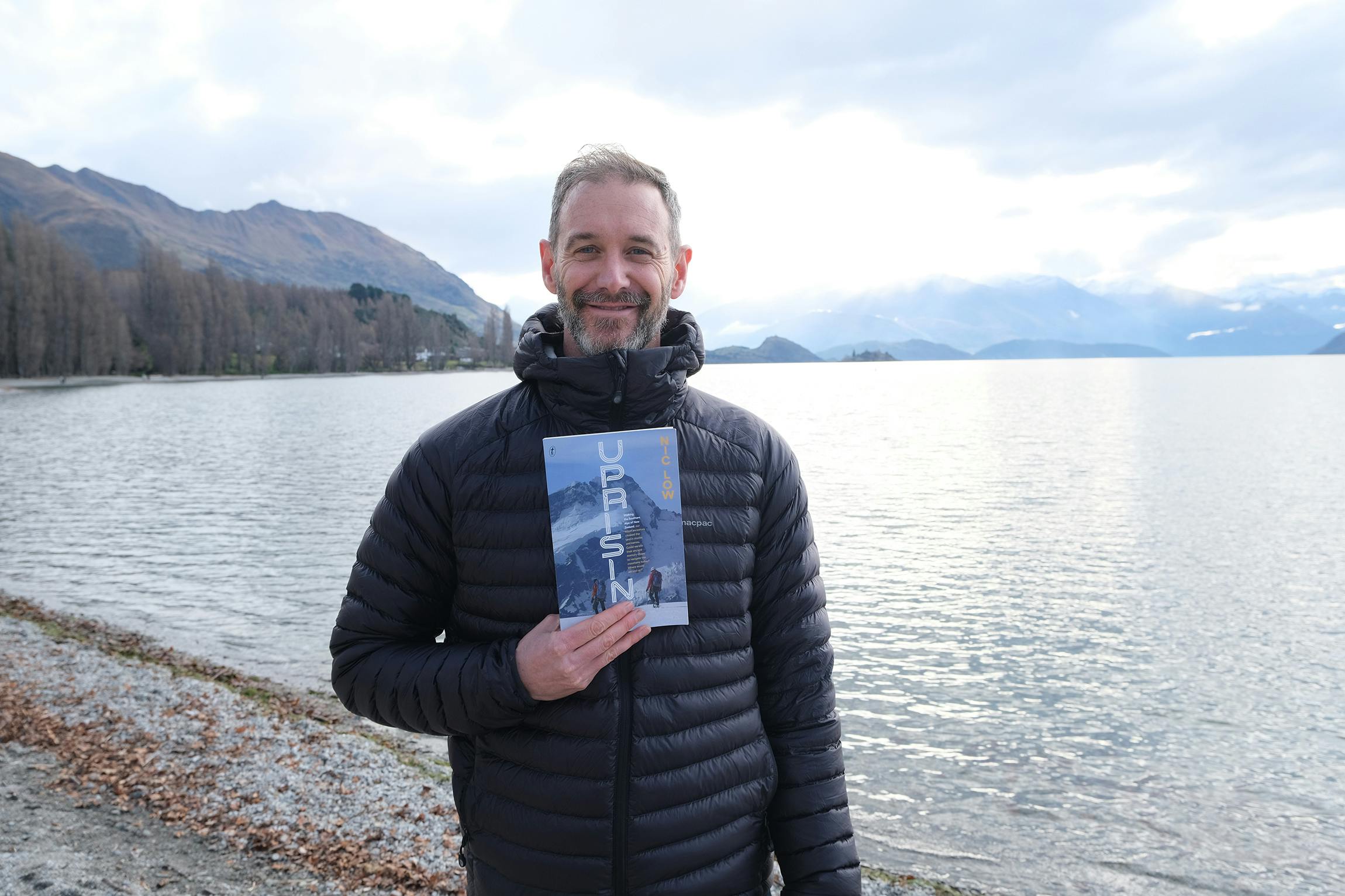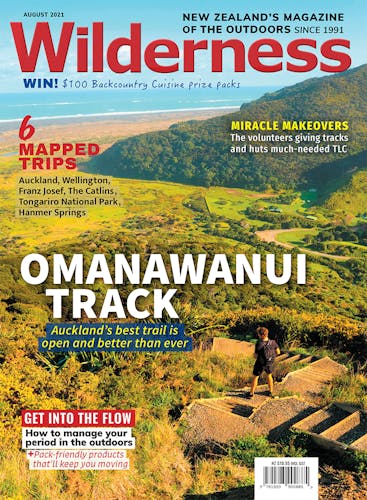Nic Low retraced his ancestor’s footsteps through the Southern Alps and rediscovered a way of tramping now lost but which he believes could one day return.
In his book Uprising, tramper Nic Low brings alive the walking culture of pre-European Māori who had spread throughout the South Island and traded with one another from coast to coast. All the crossable passes had been used and named for centuries before Europeans claimed ‘first’ crossings and naming rights.
In an interview on the shore of Lake Wānaka, Low discussed the importance of reinstating Māori names to peaks and passes and how doing so would provide a better tramping experience for everyone. He also shared a vision of how tramping might have evolved in New Zealand – and how it might yet – if the land deals had been honoured.
You’ve retraced the footsteps of your Ngāi Tahu ancestors over all the major passes of Kā Tiritiri o te Moana – the Southern Alps. What was it like to tramp through the mountains and see all these peaks and places that have been named by them?
I think there’s a real sense of connection there just knowing any of us from Ngāi Tahu descend from the first explorers of these landscapes; the people who did actually go on those first journeys and leave their names behind on the mountains. And then going further back to our creation stories, these highest mountains are very much the spiritual connection between us here on earth and the gods in the heavens. I guess I’ve always felt like I belong in the mountains; it’s an extra layer, knowing the depth of history you’ve got there.
How does it make you feel that so many mountains and passes have been renamed in honour of pākehā explorers?
A generation ago there was a real hostility to using the Māori names, and I’m seeing less and less of that resistance. If I said previously we’re here at Wānaka (Low draws out the word: Waanaka), people would have been like, what? Whereas most people don’t really blink at that now. Or, you know, Takapō instead of Tekapo. Not many people just call Aoraki Mt Cook; a lot of people will use the original name. So I think there’s a slow shift; we’re seeing an increase in people learning te reo Māori and there’s a richness that comes with that. So whilst, yes, there are pākehā names on all of these mountains, the more people understand Māori, the more meaningful the original names become, the richer the experience of being in the landscape is.
It’s not so much about erasing or taking off the pākehā names, it’s about acknowledging the original names that were there and then learning the stories and the histories behind them. And I think the more people do that, the more they’re actually going to enjoy being out in the mountains.
What is it about a name that can enhance someone’s enjoyment of the outdoors?
I think that we often see the presence of history in the landscape when we see ruins – a ruined castle on a hill. You see that and you think, people have been here a long time. Whereas here, that history is visible in the names. That’s how you know people have been here a long time. Learning that enriches it for anyone, not just if you’re Ngāi Tahu.

What impact did the renaming of place names like Nōti Hurunui to Harper Pass have on Māori?
In an oral culture, the landscape itself becomes the repository of your history. It’s the way that you remember your ancestors, the way you remember the histories, the battles, the stories, the marriages. By moving through the landscape on foot and by recalling the names of the places as you go, you’re recalling the histories, telling the story. I think the reason a lot of Māori have got really worked up about it is that it’s so much more than just a name, it’s a volume in your people’s history. So to have that wiped off the map, to lose that reference, is actually much more significant than just the handle that you use to describe that geographic feature.
Should place names be changed back to the original Māori name?
Where we know an old name, I think we should be putting those names back. Some are more militant and think that we should be doing away with the pākehā names and in some instances, I think that would be the right decision; others think that things can have dual names. You know, I’m not going to yell at someone for using the wrong name. But I’m always delighted when people do use the right name. There’s a respect there – a recognition – which I think is really important.
You write about tramping being a pākehā sport. Why isn’t it viewed as a Māori pastime?
I’ve always thought of tramping as just a sport and then I started breaking it down and asking why is it that not many of my whanau on my mother’s side are into tramping. And, more to the point, why is it that once upon a time we walked the length and breadth of this land all the time without even thinking about it. And the key answer I came up with, from talking to lots of different people – our elders, our historians, reading books – was just a loss of access.
To come up here into the high country gives us a sense of belonging and there’s such beauty here and we love being here. But if you’ve gone from owning that land and having it all very carefully allocated and divided up according to our pre-European land laws and suddenly there’s a bunch of high country run holders with armed shepherds on that land, you’re trespassing. And so little by little, all the different mahinga kai – all the food harvesting places – that you would be coming to visit get drained, the forests get burned off, the land gets cleared, so not only have you lost access, the resource that brought you there in the first place is gone.
It was a cause of great grief and great sorrow because many of us believe that the central high country was never sold. In the early land deals it was from the coast to the plains to the foothills – that first row of mountains – but the inland high country, Te Manahuna, the Mackenzie Country, that was never actually intended to be sold.
You suggest tramping in NZ might be quite different if those land deals, where Ngāi Tahu agreed to sell 20 million acres and keep two million along with a 100,000 acre corridor to the West Coast, had been honoured.
To put it into an economic framework, two million acres is an economic base; it’s land to run cattle and sheep and grow crops. That’s an amazing resource. And if that had been awarded, which was just in the contract, it just wasn’t honoured, I think we would have a really large, thriving Māori middle class who would be up here in the high country skiing and enjoying the mountains.
The mahinga kai would have all been preserved, there would have been less farming and there still would have been wetlands everywhere. All those traditional food gathering practices would have been modernised, but they would still be happening.
So yeah, I envisage tramping as moving through the landscape going from mahinga kai to mahinga kai, harvesting along the way, living off the land, having a much greater sense of your relationship to those landscapes.
And I also think that if there hadn’t been that massive period of economic hardship, which was so corrosive to the culture, the stories and the names would have been passed on more strongly.
Why would the stories and names have been passed on more strongly?
If you end up with a tiny amount of land, not enough for subsistence living, you’re removed from the land, you’re removed from the tribal contexts. And also you’re very poor, you’re living hand to mouth, and those are really difficult conditions under which to pass on your culture and your history.
Uprising is available for pre-order now at the Wilderness bookstore.








